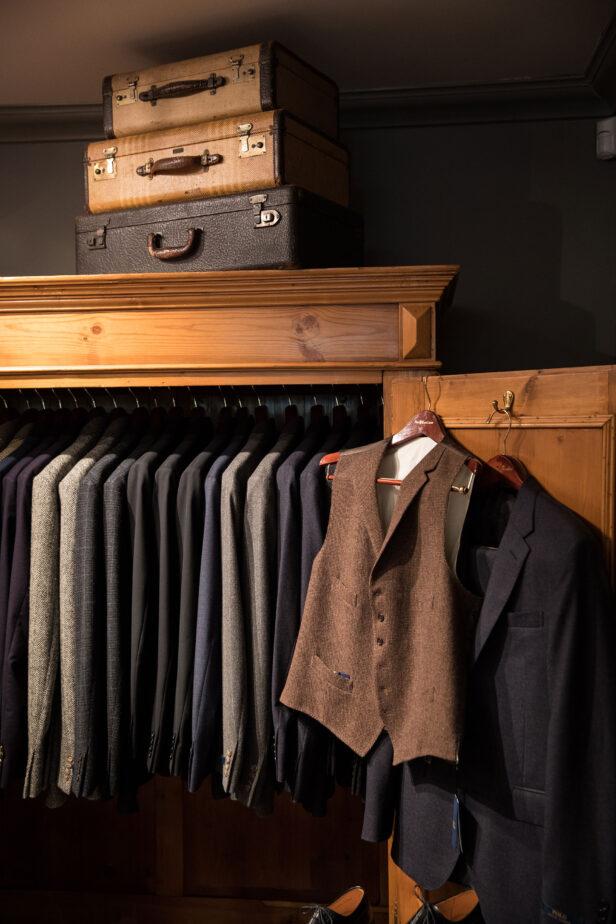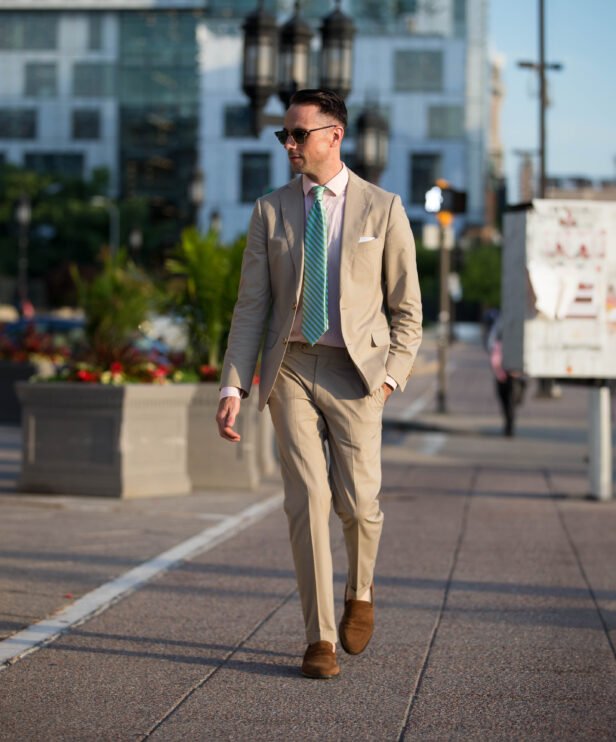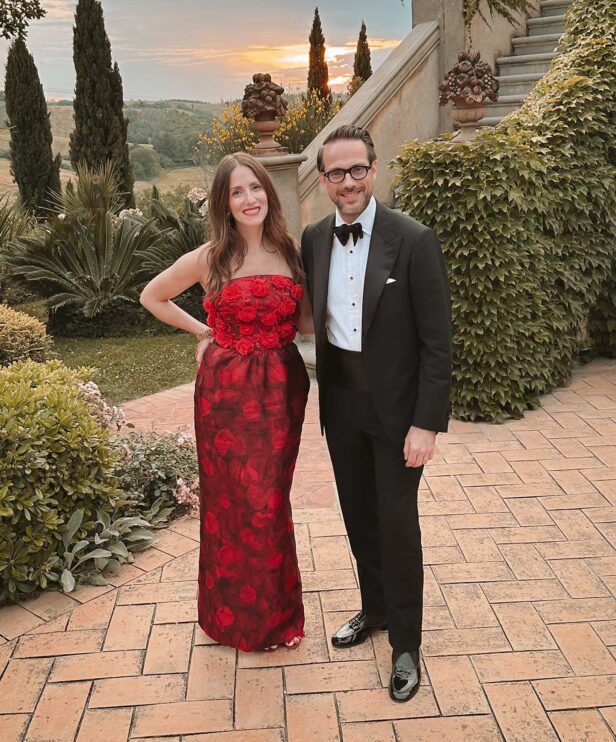I
If you are reading this article, chances are you don’t need to be sold on the virtues of quality, sustainable fabrics and the clothing made from them.
They hold up better over time. They drape better. They feel better. In most cases, they are also far more sustainable than their less expensive and very wasteful counterparts. Sustainability in the clothing industry is a critical discussion point as companies crank out increasingly high numbers of items often with little regard to the impact their processes have on the environment and people producing them.
Consumers of these products should be informed about sustainability so that they can make decisions that are best for themselves, the environment, and those creating the clothing items.
Here are the questions we’ll answer in this article:
- What makes a fabric sustainable?
- Why is sustainability in menswear (and fashion) important?
- How can you build a sustainable wardrobe?
- What are the most sustainable fabrics in menswear?
Let’s jump right in.
What Makes a Fabric Sustainable?
One of the most effective ways to define sustainable fabrics is to juxtapose them against their very common counterparts. Much of the clothing material on shelves today is less durable, less expensive, resource intensive, and environmentally unsound. This is due in large part to the explosion and popularity of fast fashion brands who prioritize quick and trendy purchases that are ultimately disposable.
While there are many advantages to fast fashion, chief among them readily available clothing that is budget friendly, this fashion phenomenon does come with a heavy price. Fast fashion fabrics are characterized by the use of synthetic materials that I heavily on plastics and require a lot of resources to process.
Sustainable fabrics, in stark contrast, rely more on locally sourced materials made from biodegradable fibers such as cotton, linen, silk, wool, and bamboo. The idea of creating sustainable fabrics is to abstain from using harmful chemicals, reducing wasteful use of resources such as water and energy, and employing ethical business practices with the workforce creating the products. These guiding principals create a sound product by way of sound business practices.
Why is Sustainability Important?
Being a good steward of resources and the environment is certainly one of the hallmarks of a gentleman. As such, it is imperative that sustainability be a consideration for clothing and fabrics.
Thinking, creating, and purchasing clothing with sustainability as a priority ensures that we are making the most of what is available to us but also honoring resources and not abusing them. It is essentially a battle between long-term quality and short term satisfaction.
Quite frankly, the current trend of cheaply made disposable fast fashion garments that end up in landfills is not a strategy built for long-term success. Focusing on a wardrobe that is sustainable is ultimately far more rewarding.
How Do You Build A Wardrobe With Sustainable Fabrics?
For those concerned with quality clothing that puts sustainability front and center — which is you, right, since you’re reading this article? — building a wardrobe with sustainable fabrics is extremely important. We’ll get to the most sustainable fabrics in just a bit, but before we do, here are some key considerations to keep in mind when building a sustainable wardrobe.
Quality Over Quantity
When it comes to menswear, It is often said that is is better to have fewer things of great quality than lots of items of poor quality. This is the first step of building a sustainable wardrobe. Getting in the mindset of purchasing fewer things may be an adjustment for those who have come of age in the era of fast fashion. It requires slowing down, doing some research, and prioritizing what pieces are most important to you. Reframing your approach to be okay with fewer items hanging in your closet is difficult but it is far more rewarding when you know that those items are purposeful and of high quality.
Patience
The second thing you’ll need when putting together a sustainable wardrobe is patience. Researching what closing is right for your personal sense of style and unique life needs can take time. Part of assembling a sustainable wardrobe is avoiding waste and choosing fewer higher quality items over large numbers of disposable items. This means your wardrobe may grow slowly and you might not have everything you desire all at once. Patience is critical because you want to make sure that your decisions are well-informed and intentional. Intentionality helps avoid waste.
A clear vision is vitally important. You should know exactly what you want. Let’s call it a battle plan for your closet.
Vision
A clear vision is vitally important. You should know exactly what you want. Let’s call it a battle plan for your closet. This goes hand in hand with being patient. If you don’t know what you want, you run the very real risk of picking up an item that is incongruent with your vision thus leaving you dissatisfied and right back in the search to replace the item. This is not sustainable thinking! Find your source of inspiration and map out the pieces that you need to achieve that vision.
Embrace repairs
One great advantage to collecting sustainable, high-quality clothing is that it can more easily be mended when it is damaged or worn. This is simply not possible with many of the cheaply made fast-fashion items. Many items can be repaired in the home with simple thread and needle however a local tailor can help with more extensive repairs. Before immediately discarding an item because of ripped seams or a small tear, consider how it could be repaired or repurposed.
The 5 Most Sustainable Fabrics
While the synthetic fabrics found in fast fashion catalogs are easily available and affordable, it is sustainable fabrics that will have a long lasting impact on the closet. Sustainable fabrics may cost more upfront, however, they tend to be more durable, classic, and fulfilling to own. Let’s take a look at some of the more popular sustainable fabrics on the market today.
Bamboo
This probably isn’t the first fabric you thought you’d see listed here, right? Bamboo gets much of its sustainability bonafides from the fact that it is an incredibly fast growing plant which requires very little water to survive. It regenerates quickly and is resilient making it an easy crop to manage.
The fibers from the bamboo plant can be woven either alone or combine with other fabrics to create blends. Its flexibility makes bamboo fibers an ideal replacement for plastic. Bamboo is also known for being a very soft fabric, much in the same vein as silk.
Perhaps most importantly, bamboo is biodegradable meaning it can disintegrate naturally without contaminating the environment. This is not a quality shared by many fast-fashion fabrics.
Cotton
Not only is cotton the most common fabric in use today, it is also one of the oldest. It is a soft, durable, and very breathable fabric making it affordable and versatile. Virtually every type and style of clothing in production can be made from cotton. T-shirts, denim, towels, corduroy, and Terry cloth are all very common examples.
Its durability is one of the hallmarks of its sustainability credentials. Cotton fabrics have a well earned reputation for being able to withstand normal, everyday wear and tear. Clothing made from cotton can retain form for years and years before appearing to be dingy. Also, as a common fabric, cotton garments are also easier to repair as materials for patching are more readily available.
As with bamboo, cotton is a naturally derived material that is renewable and biodegradable.
Linen
Another of the world’s most common sustainable fabrics, linen, is derived from the flax plant. Linen is known both for its durability as well as its lightweight nature. Linen is used in many warm weather climates as it can be more comfortable and breathable.
Perhaps more so than other fabrics, linen has a signature look that lends an air of casual elegance to it. While it is durable, linen has an almost soft, delicate look.
The flax plant that linen fabric is derived from requires very little use of pesticides, water, and fertilizers making it sustainable in its growing. Linen is also biodegradable so its life after wearing will have minimal impact on the environment.
Wool
There is perhaps no more familiar a fabric in menswear than wool. Its versatility for menswear items is unmatched. Major advantages are that it is wrinkle resistant, moisture wicking, and durable. It is known for being a warm, heavy fabric however it can easily be formatted into a lighter weight, more warm weather fabric as well. Wool can be combined with other sustainable fabrics to enhance strength and durability.
Various types of wool are produced from sheep and goats and are therefore environmentally sustainable. Wool is a renewable resource as the sheep it is culled from can be sheared annually. Producing wool requires fewer resources than many synthetic materials making it efficient.
Silk
As with the other sustainable fabrics discussed, silk is biodegradable and is a naturally occurring fiber harvested from silk worms. It is energy efficient to produce and requires very little chemical processing.
Silk is renowned for its soft and luxurious feel. It has sheen that makes it appear almost liquid at times. For menswear, silk can be combined with other fibers to give a very polished and formal look. It is often incorporated in formal wear such as tuxedos and dinner jackets to provide an elegant and lustrous look.
The Bottom Line On Sustainable Fabrics
Making sustainability a cornerstone of your wardrobe in a wise and prudent move. While it may take some time to accrue the pieces that you feel you’ll need to have a complete and well rounded closet, you’ll find that your patience will be well worth it. Investing in quality menswear items made of sustainable fabrics that are durable, timeless, and can be mended will be both rewarding and stylish.





